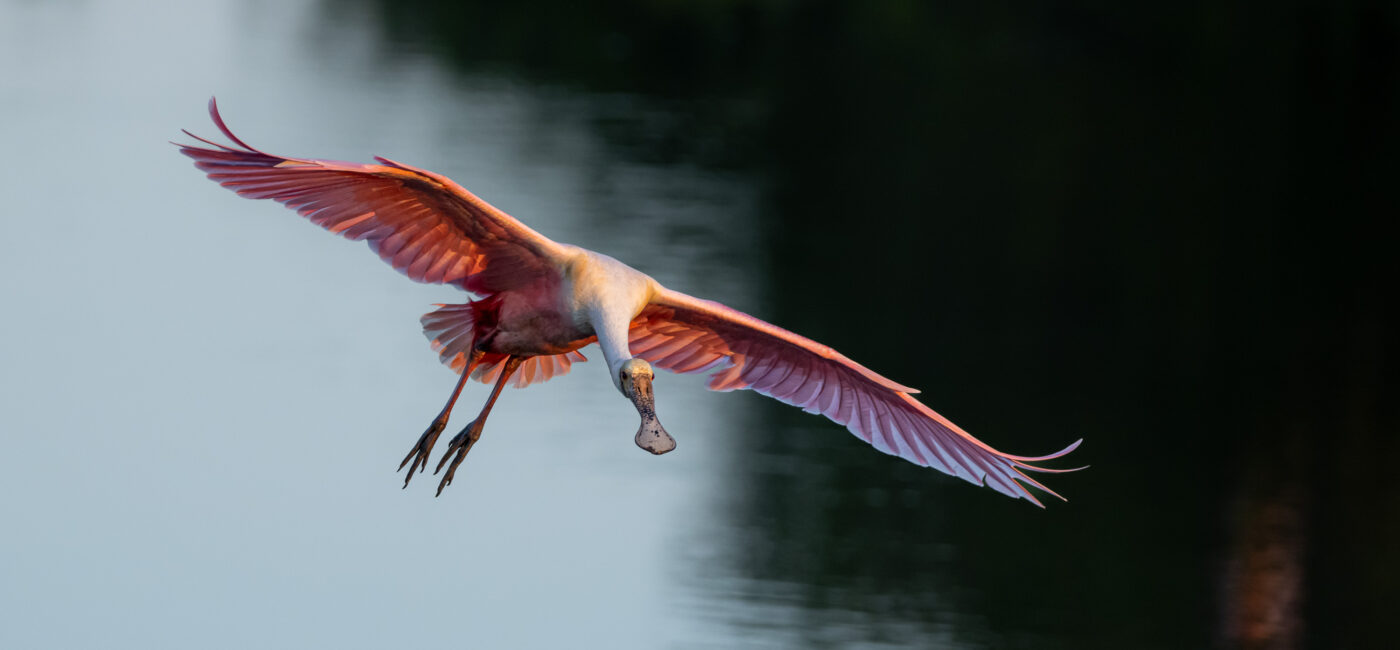
Spoonbill Junction is not its real name. We’ll keep that a secret in order to respect the Florida nature guides who earn their living bringing clients here.
All that I will say about the location is that you can get here by pontoon boat, air boat or by driving a long, dirty road that will dust your car like a powdered donut. Its not the Florida Everglades, its the junction of large freshwater lakes and the marshy headwaters that feed the St. John’s River.
Here, lies one of Florida’s largest colonies of birds—located within reach of the camera’s lens. This mangrove island rookery is chock-full of Spoonbills, Herons and Egrets, with Cormorants diving in the foreground waters and Hawks soaring in the blue skies above. I named it Spoonbill Junction, as these beautiful birds seem to fly continually back and forth in front of the camera lens as they collect material to build their nests.
When you stand on the shoreline only 150 yards from the colony, you will feel like being an air traffic controller. Just as one flight lands, another takes off. The action is non-stop in the hours surrounding sunrise and sundown. Spoonbill Junction is the photographer’s perfect practice range. The predictability of the flight paths allow continual tweaking of camera settings. These co-operative models ensure that everyone with a telephoto returns home with a National Geographic quality cover shot.

An evening session provides backlit spoonbills highlighting their lavender and raspberry colored feathers.
A morning session, with front lighting adds fiery glow to the already striking orange and crimson wings as they fly directly toward the camera. Shoot when they slow, flare their eight foot wingspans and gently set down.
Close-ups reveal pink red eyes, light blue necks and yellow-green spoon shaped bills.
Here are a few things you might not know about Spoonbills:
They live to over a dozen years and grow to 4’ high and 8’ across.
You can listen to them feed. They snap their bills like machine guns as they sweep the muddy shallows for grubs, crabs and fish.
Here are the secrets to a successful photo session: Position yourself ten feet from the water’s edge and keep an eye out for the many shockingly large alligators that live here. Shoot in manual mode. Keep your shutter speed high for tack sharp images and manage your F-stop in the F7 to F11 range. Start with ISO very high at first light, and continually drop it down minute by minute as the sun rises and the scene quickly brightens. Don’t worry about using ISO’s of 1000 to 2000 as you can later use Adobe Lightroom to “De-Noise” your images. Your priority is to obtain perfect focus of the entire bird in camera, as this cannot be fixed in post production.

Hand hold your camera, and begin tracking a bird in your telephoto lens as it leaves the colony one hundred fifty yards away.
Have your shutter mode dialed to high speed continuous. Try to keep the pinpoint focus screen directly over the birds spoonbill and eyes. Many spoonbills will fly directly toward you, slow down by flaring their wings and give you a chance to fire off a dozen great shots as they land. Check your playback for exposure, make adjustments needed and repeat. Within an hour, you will be exhausted and have filled several memory cards.
Now, you just have to find Spoonbill Junction. Here’s a final clue. Its near
a town by a similar name.
Bob Gibson gives private lesson in shooting Roseatte Spoonbills from February through May. For information, email bobgibsonphoto@gmail.com

